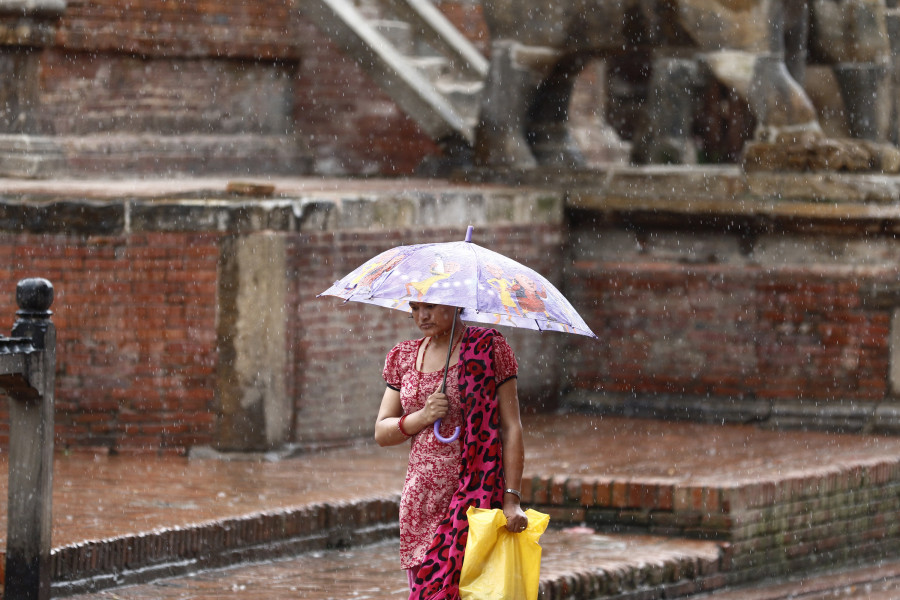Climate & Environment
Monsoon arrives in Nepal two days late
Clouds bring rain in the eastern region; west will have to wait a few more days.
Chandan Kumar Mandal
Monsoon clouds finally entered Nepal’s skies from the east on Friday, two days past the normal date, said the Meteorological Forecasting Division.
The clouds have brought rain to Province 1 and Province 2 in the eastern parts of the country, and are moving west, said the division as various parts of the country, including the Kathmandu Valley, witnessed rainfall on Friday and Saturday.
“Monsoon clouds from the Bay of Bengal have entered the country from east,” said Samir Shrestha, a meteorologist at the division. “Although the monsoon started two days late this year, it won’t make a big difference on its effects.”
The monsoon season in Nepal normally begins on June 10 and ends on September 23 every year. This is the second consecutive year that monsoon clouds entered the country after June 10. Last year, the onset was delayed by 10 days. But in 2018, it had begun two days in advance.
“The eastern parts of the country are receiving rainfall because of the monsoon, but the rain in the west can’t be attributed to the monsoon,” said Shrestha.
The clouds will take around a week to spread across the country. “By June 18-19, monsoon-triggered rainfall will take place across the country,” he said.
The western parts of the country are receiving moisture from the Arabian Sea to the west of Nepal, and this caused rainfall in Sudurpaschim Province, Karnali Province and Province 5, said Shrestha.
With the onset of the monsoon season, the weather office has alerted the public to stay safe and urged the concerned authorities to launch preparedness plans.
The country is expected to receive a normal amount of rain this year. The 16th session of the South Asian Climate Outlook Forum, a consortium of meteorologists and hydrological experts from South Asia, in April, had forecasted a normal monsoon over South Asia, including Nepal, this summer.
A normal monsoon, supported by the timely arrival of rain, translates into favourable conditions for agricultural production, mainly paddy, and is further linked with the country’s overall economic growth.
“Adequate rainfall and on time rainfall can boost paddy production which leads to economic growth in the country,” said Shrestha.
Although the rain is crucial for the country’s agricultural sector, months of lockdown, which caused a shortage of labour and chemical fertilisers could offset any potential gains from the monsoon, economists have said.
The monsoon season, which delivers around 80 percent of the country’s total annual rainfall, generally lasts for 105 days. But, in recent years, it has been taking more time to withdraw. Between 2014 to 2019, monsoon clouds withdrew from Nepal only in October every year.
“The monsoon season has been extended up to October in the past few years,” said Shrestha. “The country still receives the same amount of rainfall, but the number of rainy days has gone up.”




 5.05°C Kathmandu
5.05°C Kathmandu










